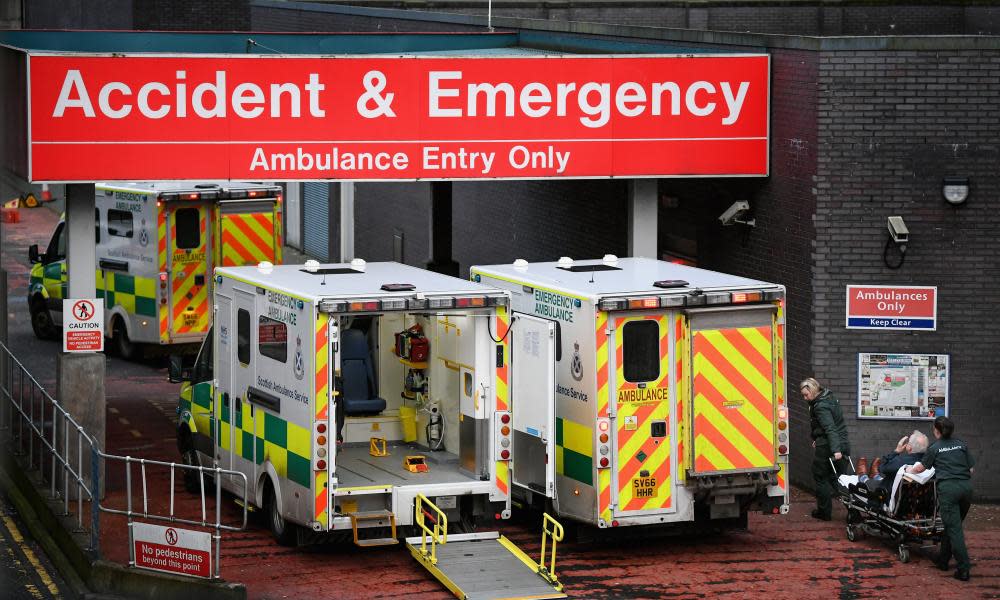Hospitals 'in red zone' with record numbers of A&E patients

Hospitals are very busy and dangerously full, even though the weather has been mild and flu is not a major problem, NHS figures show.
Record numbers of people in England sought help at A&E, had to be admitted to hospital or waited longer than the maximum 18 weeks for a planned operation in November, according to data released on Thursday.
The intense pressures on NHS services prompted warnings that this winter could prove even tougher than last year, when it experienced its worst ever winter crisis.
“Despite the extensive preparations by trusts, today’s figures make it very clear that the NHS is on course for a very difficult winter,” said Miriam Deakin, the director of policy and strategy at NHS Providers, which represents NHS trusts.
The latest performance statistics show that hospitals missed a host of waiting-time targets as they treated unusually high numbers of patients for the time of year:
• 87.6% of patients arriving at A&E were treated within four hours, far off the 95% target and the lowest proportion ever for November.
• 94.2% of hospital beds were full last week, well above the 85% figure that evidence shows is the safe limit for bed occupancy.
• A&E units had to divert patients to another hospital 25 times last week, of which 11 occurred at the troubled Worcestershire acute hospitals trust.
• 10,675 patients had to spend at least 30 minutes with ambulance crews before being handed over to A&E staff, in breach of NHS rules which say that should never happen.
• Almost 55,000 patients spent at least four hours on a trolley while they waited to get a hospital bed.
• 405 urgent operations were cancelled in October, 42% more than the 287 cancellations a year before.
The NHS is already “operating in the red zone”, the King’s Fund said.
“Despite a mild start to winter and low flu levels, targets are still being badly missed. These figures show little slack in a system which is operating consistently in the red zone.
“Hospital bed occupancy levels are already higher than recommended levels, the point at which hospitals are so full that good patient care is put at risk, ” the thinktank’s chief analyst, Siva Anandaciva, said.
Hospitals are under intense strain as a result of “sustained funding squeezes and staff shortages”. The forthcoming NHS long-term plan must set out how the service will once again start meeting patients, he said.
“Following its worst winter on record, 2018 has been a year of sustained pressure on the NHS. More people are attending A&E, requiring admission to hospital and waiting for planned treatments than ever before,” said Dr Becks Fisher, a GP and policy fellow at the Health Foundation.
NHS England stressed that a sharp year-on-year increase in the need for healthcare meant hospitals were facing unprecedented demand. The number of patients being admitted as an emergency in November – 545,000 – was up 6.3% on the same month last year. The number of A&E attendances was also 3% higher.
“NHS staff continue to work hard to deal with increased demand across the board, seeing 1,000 more people within four hours in A&E every day in November compared to last year,” an NHS England spokesperson said.
“A growing proportion of people are getting same-day emergency care, which prevents the need for an overnight stay, and hospitals have freed up an additional 742 beds, by working closely with councils to help more people return home with the right care in place.”

 Yahoo News
Yahoo News 
